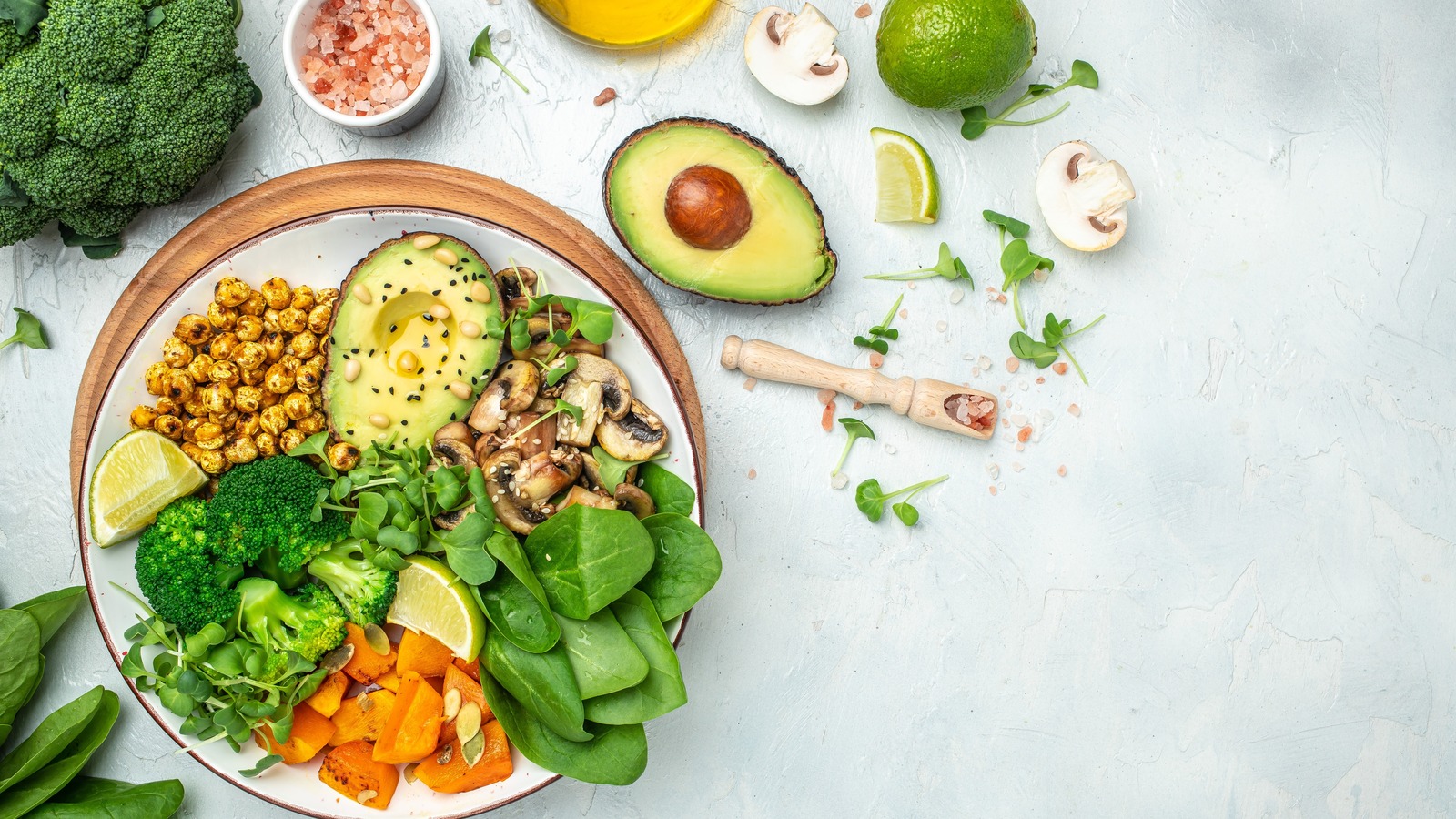
Although Sardinia, Italy, and Ikaria, Greece are the two original blue zones found within the Mediterranean, the diet consists of food from the entire region. Whether you focus on Lebanese cuisine or Tunisian food, a plate full of fresh produce, whole grains, plenty of nuts, seeds, legumes, and healthy fats is the hallmark of the Mediterranean diet.
Aside from nuts and legumes, protein is obtained primarily from seafood, with lean meat like chicken, turkey, and lamb being a second option. When it comes to carbohydrates, farro, barley, oats, and couscous are staples of the Mediterranean diet. Even with vegetables, non-starchy produce like zucchini, eggplant, bell peppers, and dark leafy greens are favored over potatoes or corn. In general, meals — such as sheet-pan chicken shawarma or Mediterranean orzo — feature a colorful balance of whole grains, lean protein, greens, and more.
Post-dinner treats tend to overlap with produce and healthy fats. Greek yogurt, fruits such as pomegranates, apples, strawberries, figs, and grapes, nuts, and low-fat, unprocessed cheeses like feta or ricotta are eaten instead of sugary confections. Adults also enjoy the occasional glass of wine in moderation. And meals are cooked with olive oil and herbs rather than butter and salt.
